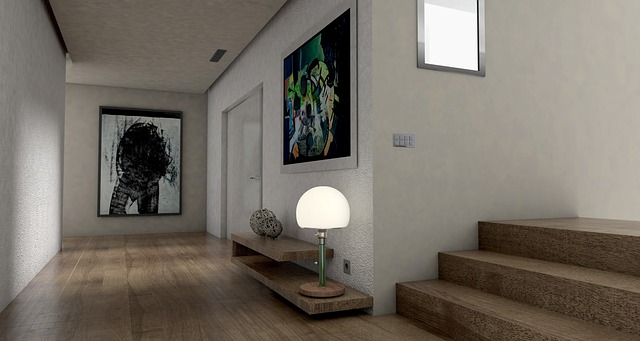In contemporary art, the term *graphic exhibition* has moved beyond the narrow confines of traditional printmaking to encompass a broad spectrum of visual communication. From the crisp lines of lithographs to the immersive layers of digital projection, a graphic exhibition acts as a living dialogue between artist, medium, and viewer. It invites audiences to engage with ideas that are at once visual, textual, and performative. By situating graphics in a curatorial context, museums and galleries invite a conversation that transcends static display, encouraging visitors to question and reinterpret the meaning behind each composition. This article explores the evolution of graphic exhibitions, their place within fine arts and culture, and the impact they have on both artists and audiences.
Historical Foundations of Graphic Exhibitions
The roots of graphic exhibitions lie in the 19th‑century rise of print culture. Early exhibitions at the Royal Academy in London and the Salon in Paris showcased lithographs and engravings as essential vehicles for disseminating artistic ideas. These events were not merely showcases; they were marketplaces of information where engravers, illustrators, and publishers exchanged techniques and philosophies. The 1903 exhibition of graphic works at the Museum of Modern Art in New York introduced modernist sensibilities, presenting works by Picasso and Matisse that challenged conventional representation.
As printing technology advanced, so did the complexity of graphic exhibitions. The 1920s saw the proliferation of posters and political cartoons in Berlin and Paris, illustrating how graphic art could serve social commentary. The 1930s introduced the American Regionalist movement, with artists like Thomas Hart Benton using murals and posters to capture rural life. These early exhibitions laid the groundwork for future curatorial approaches that treat graphics as narrative and analytical tools, not merely decorative adjuncts.
From Print to Projection: The Evolution of Graphic Exhibitions
The mid‑20th century ushered in new technologies that expanded the possibilities of graphic exhibitions. The advent of silkscreen printing and screen‑printing allowed artists to produce multiples that were both fine art and commercial. This period also saw the emergence of the poster as a legitimate art form, with designers like Paul Rand and Saul Bass creating iconic visuals that blurred the line between advertising and fine art.
In the 1960s and 1970s, the rise of digital technology began to influence graphic exhibitions. Early experiments with vector graphics and computer‑generated images were displayed in experimental art spaces such as the MIT Media Lab. The 1990s marked a turning point with the introduction of large‑scale digital projection in venues like the Museum of Contemporary Art in Los Angeles. Artists like Nam June Paik and Bill Viola used video projections to transform gallery walls into dynamic, interactive landscapes, redefining what a graphic exhibition could be.
Today, graphic exhibitions are increasingly interdisciplinary, incorporating graphic novels, interactive installations, and mixed‑media collages. Curators curate experiences that move beyond the printed page, using light, sound, and motion to create immersive environments. The shift from static print to dynamic visual media reflects a broader cultural movement toward participatory art, where audiences are no longer passive observers but co‑creators of meaning.
Contemporary Graphic Exhibitions on the Global Stage
The global reach of graphic exhibitions is evident in landmark shows such as the 2015 “Graphic Exhibition: Global Perspectives” held at the Guggenheim Bilbao. This exhibition showcased works from over 40 countries, highlighting how graphic art can articulate local identities within a global narrative. Artists like El Anatsui, whose works merge gold leaf with found materials, and Zanele Muholi, whose portraits confront gender politics, exemplified the diverse voices now present in contemporary graphic shows.
In Asia, the 2019 “East Meets West” graphic exhibition in Tokyo blended traditional Japanese ukiyo‑e with contemporary digital illustrations, illustrating a dialogue between heritage and innovation. Meanwhile, in South America, the 2020 “Arte Urbano” exhibition in São Paulo focused on street art and political graffiti, demonstrating how graphic exhibitions can serve as platforms for social activism.
Another significant trend is the rise of virtual graphic exhibitions, especially in the wake of the COVID‑19 pandemic. Institutions such as the Smithsonian and the National Gallery of Art have launched online galleries that feature high‑resolution scans of prints, interactive 3D models of sculptures, and video interviews with artists. These virtual spaces democratize access, allowing audiences worldwide to engage with graphic exhibitions from the comfort of their homes.
Artistic Impact: Dialogue Between Medium and Message
The medium of graphics offers artists a unique set of tools for conveying complex ideas. By manipulating line, color, and typography, graphic artists can condense narratives into visually compelling compositions. This capacity for condensation makes graphic exhibitions especially potent for addressing contemporary issues—politics, identity, environmental concerns—within a concise framework.
“Graphics are the language of the visual age,” writes art historian Maria Gonzalez. “They bridge the gap between fine art and everyday communication.”
Graphic exhibitions often encourage a participatory dialogue. Interactive installations that respond to viewer movements, for instance, create a feedback loop between artwork and audience. This interactivity is evident in projects like “Echoes of Silence,” where soundscapes evolve in real time as visitors navigate a space of projected glyphs. Such works underline how graphic exhibitions are not merely displays but conversations that adapt to the presence of viewers.
The educational impact of graphic exhibitions should not be underestimated. Graphic designers and artists frequently collaborate with schools to develop curricula that incorporate visual literacy, helping students decode visual symbols and narratives. In this way, graphic exhibitions become incubators of critical thinking and creative problem‑solving.
Audience Engagement and Cultural Dialogue
Engagement metrics for graphic exhibitions reveal a growing public interest in visual storytelling. Visitor surveys consistently indicate that audiences appreciate the clarity and immediacy of graphic visuals, especially when paired with contextual information provided through captions or audio guides.
Cultural dialogue is another hallmark of successful graphic exhibitions. By showcasing works from multiple cultural backgrounds, exhibitions can foster empathy and cross‑cultural understanding. For instance, the 2021 “Faces of the World” exhibition featured portraits of individuals from diverse ethnicities, accompanied by personal narratives that highlighted shared human experiences. This format allowed visitors to confront preconceptions and broaden their perspectives.
- Interactive Q&A sessions with artists, giving audiences insight into creative processes.
- Community‑driven workshops where visitors create their own graphic pieces, thereby participating directly in the artistic dialogue.
- Multilingual exhibition guides, ensuring that language barriers do not impede comprehension.
Accessibility is paramount. Modern graphic exhibitions employ tactile guides for visually impaired visitors, and many venues now offer digital overlays that describe visual elements in real time. By prioritizing inclusivity, curators expand the reach of graphic exhibitions, ensuring that the dialogue is truly universal.
Future Directions
As technology continues to evolve, graphic exhibitions will likely integrate augmented reality (AR) and artificial intelligence (AI) to create even more immersive experiences. Artists may employ AI‑generated imagery to explore themes of identity and autonomy, while curators could use AR overlays to layer historical context onto contemporary works. These advancements promise to deepen the interactive potential of graphic exhibitions, reinforcing their role as dynamic platforms for cultural conversation.
Ultimately, the trajectory of graphic exhibitions reflects a broader shift in fine arts toward interdisciplinary collaboration and audience participation. By embracing new media and inclusive practices, graphic exhibitions remain at the forefront of artistic innovation, continually reshaping how we perceive, interpret, and engage with visual culture.




